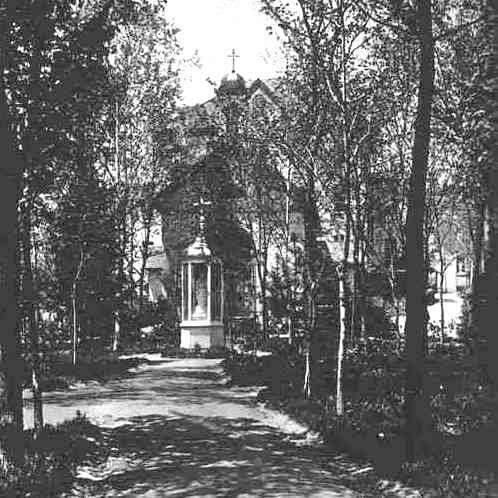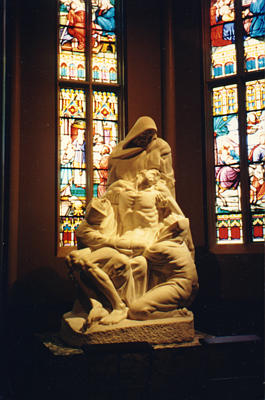
Notre Dame's Grotto / by Dorothy V. Corson


The First Replica of a Shrine at Notre Dame
Meanwhile, a year after the phenomenon at Lourdes in 1859, the model and plans for the Chapel of Loretto -- which still exists directly behind the present Church of Loretto at Saint Mary's College -- were brought from Italy by Father Neil H. Gillespie, the brother of Sister Angela of St. Mary's Academy. It was completed the same year. It has the distinction of being the first replica of a shrine built on either campus. It is a facsimile of the original "House of the Incarnation," where Gabriel, the angel of the Lord, announced to Mary the birth of Jesus -- the Son of God. According to legend, it was transported by angels from Nazareth to a shepherd's field in Loretto, Italy.
Father Gillespie was one of the first students who entered the University of Notre Dame. In June 1849, he became one of the first two graduates to receive a Bachelor of Arts degree from the University.
Two years later, in 1861, the first replica of a shrine at Notre Dame, The Portiuncula Chapel of Our Lady of Angels, was built on the "island." It took the place of the island chapel, the first of many early shrines on campus, dedicated to Mary throughout the University's early history. It was removed in 1858 along with the first Novitiate.
The Chapel at Assisi was originally known as St. Mary of the Angels because of local reports of angelic visitations. It was probably built in the tenth or the eleventh century, but was abandoned late in the twelfth century. The young Francis repaired it in 1207. There St. Francis received his vocation and founded his first order. He died there in an adjacent cell in 1226.
This facsimile was yet another "adornment" on the "island." It was erected when the Holy Cross Community obtained the canonical establishment of the Portiuncula indulgences at Notre Dame. In the years that followed, throngs of pilgrims visited the little Portiuncula Chapel on August 2, the Feast Day of Our Lady of Angels, to gain the plenary indulgences.
The Portiuncula Chapel, dismantled in 1898, was just the beginning of a conscious effort by Father Sorin to encourage pilgrimages to Notre Dame.
Many years later, Notre Dame's famous resident sculptor, Ivan Mestrovic, was associated with another Portiuncula Chapel.

In his early career when Mestrovic was working as both an architect and a sculptor, he built an Our Lady of Angels Chapel to keep his promise to a young shipowner's daughter, Maria Racic Banac. Before she died, after two other members of her family died in rapid succession, she asked her mother to have Mestrovic "build me a tomb and console me with the thought that death is just a shadow." As an answer to Maria, the artist inscribed on the bronze bell hanging from the cupola: "Know the mystery of love and thou shalt solve the mystery of death and believe that life is eternal."(17)
Mestrovic sculpted many works of art on campus. Of his sculptures honoring Mary, the "Pieta," now in the Basilica of the Sacred Heart, and "Woman under the Cross," Mestrovic said: "All speak of the supreme sacrifice which is also a promise of salvation to those that recognize immortality imprisoned in every soul in love with eternity."